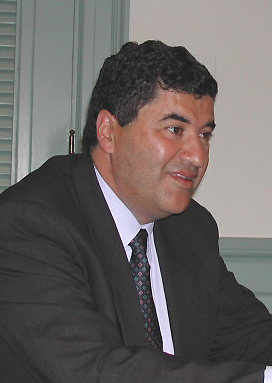GUIDING PRINCIPLES
 |
Conflict-of-interest issues and other divisive vital issues have tugged at the fabric of the NIH community before, but within my time so far at NIH, there has been no more divisive issue for NIH staff. I have taken a strong position to protect the credibility of NIH science, and I know many of you appreciate the importance of this issue for NIH and for the country as well.
This unprecedented dedicated issue of The NIH Catalyst seeks to clarify the new conflict-of-interest rules; this editorial expresses my heartfelt hope that increased understanding will reduce the stresses and strains and patch up any holes that may be emerging in our community as we restore public trust in NIH.
Where do we start? The first step is in understanding what the new Interim Final Rule says. On these pages, the rules are again summarized, but not from the standpoint of the lawyers. This time we’re highlighting the good news: that the important academic exchanges that traditionally informed our science can and should continue.
We also repeat what you cannot do and what things are still being worked out. We highlight how you can register your opinions about the regulations to help improve them and how you can seek exceptions when you believe that your personal situation offers a compelling reason to exempt you from specific conflict-of-interest regulations.
It is important to understand the precepts that stand behind the conflict-of-interest rules. They are:
1–You must not "serve two masters." You cannot have another financial interest in the work that you do for NIH outside of your federal job.
2–You must not "double-dip." If the taxpayers have paid for your work, someone else may not pay you again for that work.
3–Within the boundaries of the first two rules, it is important to protect your rights to speak and write so as to guarantee that biomedical research remains a free marketplace of ideas and constructive interactions untainted by bias and conflicts.
As we begin implementing the conflict-of-interest rules, the challenge for administrators will be to assure that the policies are clear and understandable, that they are fair and consistent, and that their implementation is efficient. If the review of official duty activities is cumbersome and time-consuming, this could stifle collaboration almost as much as a ban.
Amidst all the chaos and noise from the new rules, my last exhortation is not to become deaf to your own inner judgment. This has been and always will be the most important fiber in the integrity of our community. If something sounds wrong to you, if it feels uncomfortable, don’t do it—whether the rules cover it or not. Rules and lawyers can’t cover everything, but our fundamental good judgment can.
Finally, as we emerge from this painful episode, I remain just as concerned about the necessity to protect the vitality of our precious intramural program as about the need to close this unfortunate chapter in our history. I want to encourage a wide, direct, and open dialogue with all of NIH’s staff to carefully evaluate these interim final rules during the official comment period for any unintended consequences or undue hardships—which I will do my best to address. This is why I encourage all of our community to participate in a forthright and constructive process to insure that we learn from the events of the past and develop a more transparent and responsive system that will re-establish the moral authority of NIH while preserving the excellence of our science.
—Elias
Zerhouni
Director,
NIH